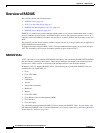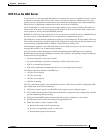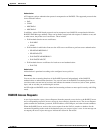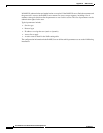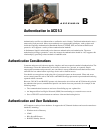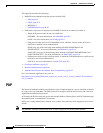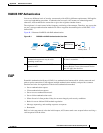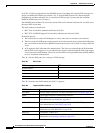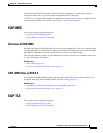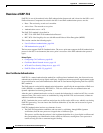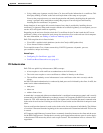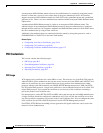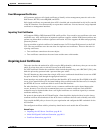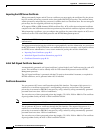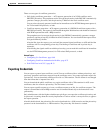
B-4
User Guide for Cisco Secure Access Control System 5.3
OL-24201-01
Appendix B Authentication in ACS 5.3
EAP
In ACS 5.3, EAP is encapsulated in the RADIUS protocol. Incoming and outgoing EAP messages are
stored in a RADIUS EAP-Message attribute (79). A single RADIUS packet can contain multiple
EAP-Message attributes when the size of a particular EAP message is greater than the maximum
RADIUS attribute data size (253 bytes).
The RADIUS State attribute (24) stores the current EAP session reference information, and ACS stores
the actual EAP session data.
The EAP standard is described in:
• RFC 3748—Extensible Authentication Protocol (EAP).
• RFC 3579—RADIUS Support For Extensible Authentication Protocol (EAP).
In the EAP process:
1. The network device sends an EAP Request to a host when the host connects to the network.
2. The host sends an EAP Response to the network device; the network device embeds the EAP packet
that it received from the host into a RADIUS request and sends it to ACS, which is acting as the EAP
server.
3. ACS negotiates the EAP method for authentication. The client can acknowledge the EAP method
that the EAP server suggests or, it can respond with a negative acknowledgment (NAK) and suggest
a list of alternative EAP methods. The server and client must reach agreement about the EAP method
to use to instantiate authentication.
Table B-1 lists the EAP codes for each type of EAP message.
Table B-2 describes the EAP methods that ACS 5.3 supports.
Table B-1 EAP Codes
EAP message type EAP code
Accept-request 1
Response 2
Success 3
Failure 4
Table B-2 Supported EAP methods
EAP Method Description
EAP-MD5 Message Digest 5 Protocol. For more information see EAP-MD5, page B-5.
LEAP Lightweight Extensible Authentication Protocol.
PEAPv0v1 Protected Extensible Authentication Protocol version 0 and version 1. For
more information see PEAPv0/1, page B-14.
EAP-FAST EAP Flexible Authentication via Secured Tunnel (EAP-FAST) protocol. For
more information see EAP-FAST, page B-18.
EAP-MSCHAPv2 Microsoft Challenge Handshake Authentication Protocol version 2. For more
information see EAP-MSCHAPv2, page B-30.
EAP-GTC EAP Generic Token Card.
EAP-TLS Extensible Authentication Protocol-Transport Layer Security. For more
information, see Exporting Credentials, page B-11.



